Origami, the ancient art of paper folding, holds a world of creativity and precision within its delicate folds. At its core lies a fundamental technique known as the “valley fold.”
In this exploration, we embark on a journey into the heart of origami, unraveling the meaning and significance of this essential fold.
A valley fold transforms a lifeless paper into a canvas for imagination, turning a two-dimensional plane into a three-dimensional sculpture.
It is the cornerstone of countless origami designs, from the simplest creations to the most complex masterpieces.
Within these folds lies a testament to human ingenuity, patience, and the limitless potential of a humble sheet of paper.
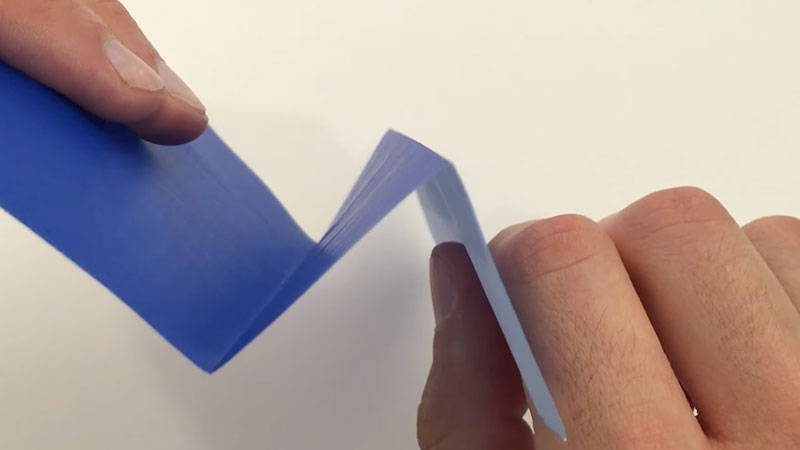
What Is the History of Valley Folds in Origami?
The history of valley folds in origami is deeply rooted in the evolution of this ancient art form. Origami, the Japanese art of paper folding, has a long and rich history dating back over a thousand years.
Origins in Japan
The precise origins of origami are somewhat obscure, but it is widely believed to have originated in Japan. The word “origami” itself is of Japanese origin, derived from “oru” (to fold) and “kami” (paper).
Early forms of paper folding in Japan had religious and ceremonial significance, with the folded paper used in offerings and rituals.
Early Development
Origami gradually evolved over the centuries. It transitioned from religious and ceremonial uses to more recreational and artistic practices during the Edo period (1603-1868).
This period they marked the beginning of the popularization of origami as a pastime. Paper folding techniques, including valley folds, began to take on more defined forms.
Modern Era and Standardization
The modernization and standardization of origami techniques, including the formal introduction of valley folds, occurred in the 20th century.
Notable figures like Akira Yoshizawa and Samuel Randlett played significant roles in advancing origami as an art form.
They developed systematic approaches to origami and documented folding instructions, making origami more accessible and understandable to a global audience.
Global Popularity
The history of valley folds in origami reflects the global journey of this art form. Origami, once a niche practice in Japan, has become a beloved and universal art form.
It has captured the imagination of artists and enthusiasts worldwide, with valley folds and other folding techniques forming the foundation for creating intricate and expressive paper sculptures.
What Does Valley Fold Mean In Origami?
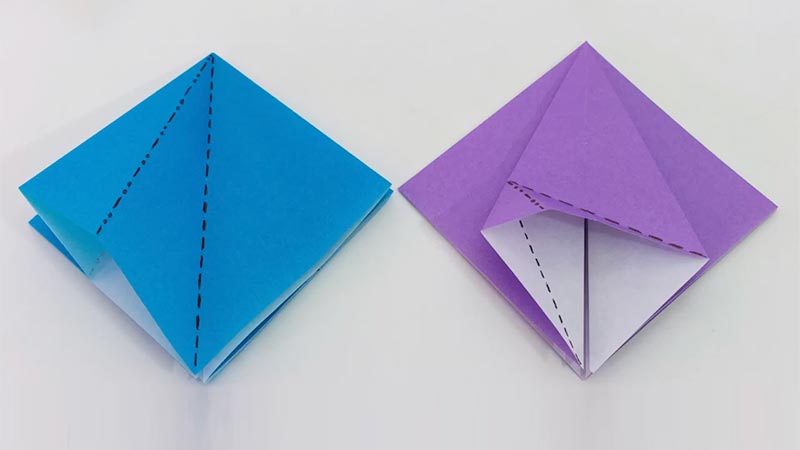
In the captivating world of origami, a “valley fold” is a foundational folding technique, the cornerstone of paper artistry. It entails folding a paper section toward yourself, creating a concave valley-like shape on the paper’s surface.
This technique is fundamental to origami as the building block for many paper creations. Whether crafting a simple crane or an intricate modular design, the valley fold is the first brushstroke on the paper canvas.
It brings dimension and life to once-flat sheets, allowing artists to sculpt beauty and intricacy with every crease. In origami’s silent poetry, the valley fold whispers the first words of a paper-bound story, waiting for hands to complete the tale.
What Is the Significance of the Valley Fold in Origami Design?
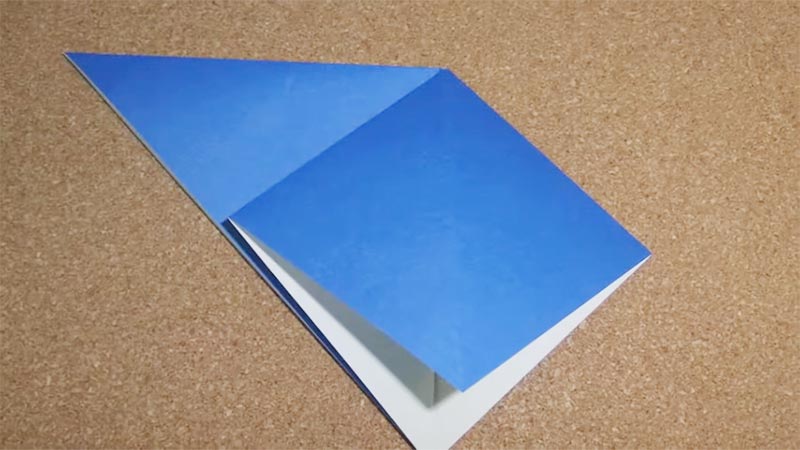
The valley fold holds profound significance in origami design. It serves as the initial step and foundation for most origami creations, influencing the final form and appearance of the folded model.
Here’s why the valley fold is so significant in origami design:
Structural Foundation
Valley folds create the structural foundation for an origami model. Folding a portion of the paper toward yourself provides stability and rigidity, allowing the model to maintain its shape and stand on its own.
Defining Features
Valley folds often determine the defining features of a model. Whether it’s a bird’s wings, a flower’s petals, or an animal’s limbs, valley folds shape these elements and contribute to the model’s recognizable characteristics.
Complexity and Detail
The precision of valley folds allows for intricate details and complexity in origami designs. By combining multiple valley folds, artists can create intricate patterns, textures, and realistic representations of objects and creatures.
Imagination and Creativity
Valley folds are a canvas for an artist’s imagination. They provide the first opportunity for creativity to flourish as artists decide how to shape the paper to bring their vision to life.
Symmetry and Balance
Valley folds are often used to create symmetry and balance in origami models. This is crucial for achieving a visually pleasing and harmonious final result.
How Do You Make a Valley Fold in Origami?
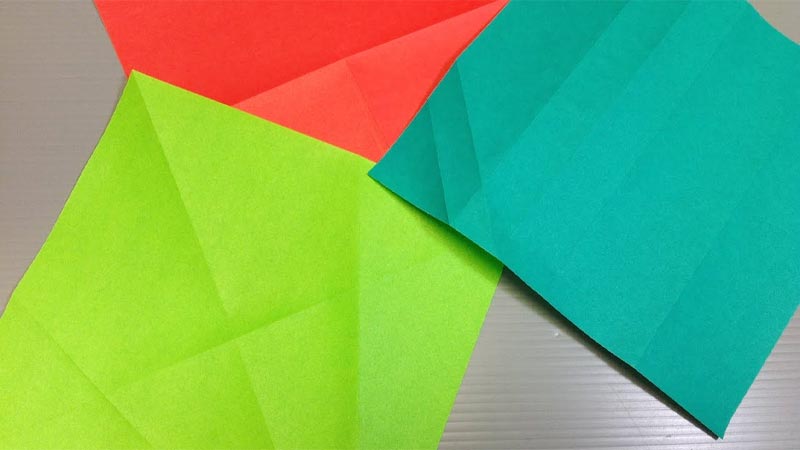
Creating a valley fold in origami is a fundamental skill that forms the basis for numerous intricate paper designs.
To master this technique, follow these steps:
Paper Orientation
Start with a flat, stable surface, like a table or a mat. Place your origami paper on the side you want visible, facing down. If the paper has a distinct pattern or color, ensure it faces the right direction.
Choose the Fold Line
Select the area of the paper where you want to create the valley fold. You can lightly mark the fold line with a pencil or use a bone folder for precision.
Fold the Paper
Lift the edge of the paper along the chosen fold line and bring it towards yourself. As you fold, the paper should form a crease that resembles a valley. Ensure that the fold is straight and accurate.
Create a Sharp Crease
After folding, run your fingers or a tool like a bone folder along the fold line. This action forms a sharp and well-defined crease, a crucial element in origami for achieving precise results.
Valley Fold Line
Gently unfold the paper if you need to reference the valley fold later in your origami model. You’ll notice a dashed line along the creased area, marking the valley fold line for guidance.
What Are the Different Orientations of Valley Folds in Origami?
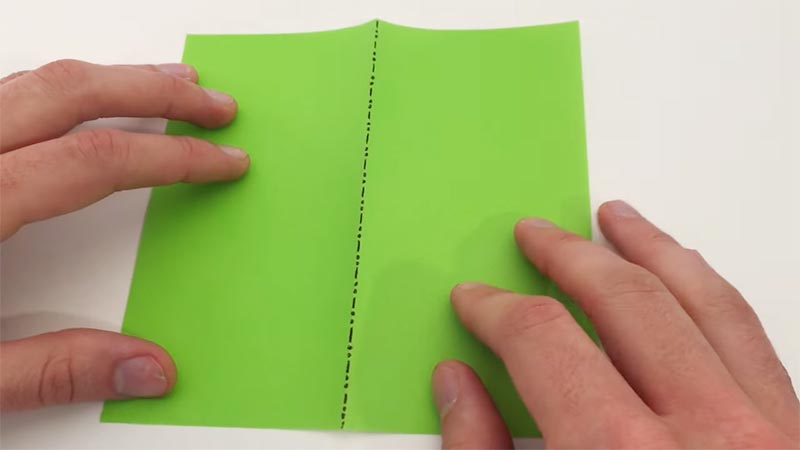
In the art of origami, paper folding is not restricted to a single direction; instead, valley folds can be executed in various orientations to achieve distinct shapes and structures.
Here are the different orientations of valley folds in origami:
Horizontal Valley Folds
Horizontal valley folds involve folding the paper parallel to the table’s surface along a horizontal line. This orientation is commonly used to create flat surfaces or wings in origami models.
For instance, the wings of a paper bird or the base of an animal figure may use horizontal valley folds to achieve a flat, level appearance.
Vertical Valley Folds
The paper is folded perpendicularly to the table’s surface along a vertical line in vertical valley folds. This orientation is vital for building height or vertical elements within origami structures.
Origami models like buildings, tall animals, or objects that require a vertical dimension employ vertical valley folds to establish their unique form.
Diagonal Valley Folds
Diagonal valley folds follow a diagonal line on the paper, introducing dynamic angles and shapes to origami designs.
These folds are perfect for creating models with slanted or diagonal features, lending a sense of motion and energy to the overall structure. Models that depict actions or dynamic poses often rely on diagonal valley folds.
Curved Valley Folds
Curved valley folds incorporate graceful arcs and curves into origami designs. They are well-suited for crafting organic, rounded forms such as flowers, animals, or anything requiring a lifelike, natural appearance. Curved valley folds allow origami artists to infuse their creations with realism and fluidity.
What Are Some Examples of Origami Models That Use Valley Folds?
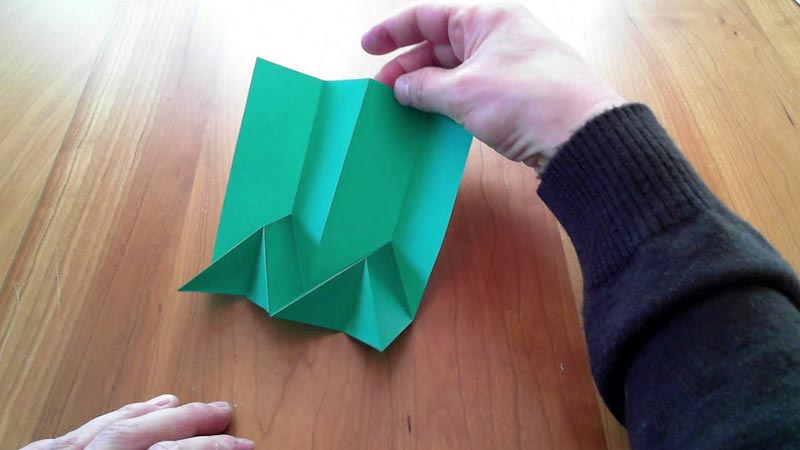
Origami, the art of paper folding, offers various models, from simple shapes to intricate sculptures, all brought to life through various folding techniques. Valley folds, in particular, play a crucial role in shaping many origami creations.
Here are some examples of origami models that use valley folds as a fundamental part of their design:
Origami Boat
The origami boat is a classic and straightforward model where valley folds are utilized to create the boat’s hull. These valley folds define the characteristic shape of a sailboat or ship.
Traditional Origami Crane
The traditional origami crane is a symbol of peace and a beloved model that incorporates valley folds to shape the wings and neck of the crane. These folds give the crane its elegant and lifelike appearance.
Origami Butterfly
Origami butterflies are known for their intricate and delicate appearance. Valley folds are essential in shaping the butterfly’s wings, allowing symmetry and intricate patterns.
Simple Origami Heart
A simple origami heart is a popular model that uses valley folds to shape the two halves of the heart. This model symbolizes love and is a favorite for romantic occasions.
Origami Frog
Origami frogs are often designed to jump when their legs are folded and released. Valley folds create the frog’s legs, enabling this entertaining feature.
Origami Flower
Origami flowers like the traditional lily are admired for their intricate and realistic appearance. Valley folds shape the flower’s petals and contribute to the overall elegance.
Origami Box
Origami boxes come in various styles and sizes. Valley folds are essential in creating the corners and sides of the box, making it a functional container for small items.
Origami Star
Origami stars, like the lucky star, are characterized by their distinctive five-pointed shape. Valley folds are crucial in achieving the star’s sharp angles and precise points.
Origami Hat
Origami hats, such as the traditional sailor hat, employ valley folds to shape both the brim and the crown, making them fun and practical.
FAQs
Are valley folds easy for beginners to learn in origami?
Yes, valley folds are among the fundamental techniques in origami, making them accessible for beginners who want to start their paper-folding journey.
Why are valley folds important in origami?
Valley folds are fundamental to origami, serving as the basis for creating three-dimensional paper models and intricate designs. They are essential for various origami projects.
What is the opposite of a valley fold in origami?
The opposite of a valley fold is a mountain fold, where a part of the paper is folded away from yourself, forming a raised, mountain-like shape on the paper.
How can valley folds be used to create complex origami designs?
Valley folds can be combined with other folding techniques to create complex and detailed origami designs, offering endless creative possibilities.
What are some tips for mastering valley folds in origami?
Tips for mastering valley folds include using a flat, stable surface, making precise creases, and following origami instructions or diagrams.
To Recap
In the enchanting world of origami, the valley fold reveals itself as a humble yet profound artist’s tool. As we conclude our exploration of this fundamental technique, we find that the valley fold is the gateway to a realm of creativity and artistry.
It imparts depth, shape, and structure to flat sheets of paper, enabling them to metamorphose into intricate sculptures, delicate creatures, and elegant designs. The significance of the valley fold transcends its simplicity; it symbolizes the art of transformation itself.
In origami, every crease tells a story, and the valley fold marks the beginning, promising a journey where imagination takes flight, guided by the deft touch of human hands.
Leave a Reply